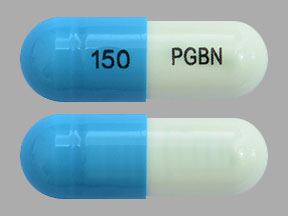Pregabalin Interactions
There are 287 drugs known to interact with pregabalin, along with 6 disease interactions, and 1 alcohol/food interaction. Of the total drug interactions, 28 are major, 258 are moderate, and 1 is minor.
- View all 287 medications that may interact with pregabalin
- View pregabalin alcohol/food interactions (1)
- View pregabalin disease interactions (6)
Most frequently checked interactions
View interaction reports for pregabalin and the medicines listed below.
- Adderall (amphetamine / dextroamphetamine)
- Aspir 81 (aspirin)
- Aspirin Low Strength (aspirin)
- Benadryl (diphenhydramine)
- Celebrex (celecoxib)
- CoQ10 (ubiquinone)
- Cymbalta (duloxetine)
- Eliquis (apixaban)
- Fish Oil (omega-3 polyunsaturated fatty acids)
- Jardiance (empagliflozin)
- Linzess (linaclotide)
- Metoprolol Succinate ER (metoprolol)
- Metoprolol Tartrate (metoprolol)
- Mounjaro (tirzepatide)
- Norco (acetaminophen / hydrocodone)
- Ozempic (semaglutide)
- Paracetamol (acetaminophen)
- Probiotic Formula (bifidobacterium infantis / lactobacillus acidophilus)
- Symbicort (budesonide / formoterol)
- Synthroid (levothyroxine)
- Tylenol (acetaminophen)
- Vitamin B12 (cyanocobalamin)
- Vitamin C (ascorbic acid)
- Vitamin D2 (ergocalciferol)
- Vitamin D3 (cholecalciferol)
- Vyvanse (lisdexamfetamine)
- Wellbutrin XL (bupropion)
- Xanax (alprazolam)
- Xarelto (rivaroxaban)
- Zyrtec (cetirizine)
Pregabalin alcohol/food interactions
There is 1 alcohol/food interaction with pregabalin.
Pregabalin disease interactions
There are 6 disease interactions with pregabalin which include:
- drug dependence
- suicidal tendency
- angioedema
- creatine kinase elevations
- peripheral edema
- PR interval prolongation
More about pregabalin
- pregabalin consumer information
- Compare alternatives
- Pricing & coupons
- Reviews (1,687)
- Drug images
- Side effects
- Dosage information
- Patient tips
- During pregnancy
- Support group
- Drug class: gamma-aminobutyric acid analogs
- Breastfeeding
- En español
Related treatment guides
Drug Interaction Classification
| Highly clinically significant. Avoid combinations; the risk of the interaction outweighs the benefit. | |
| Moderately clinically significant. Usually avoid combinations; use it only under special circumstances. | |
| Minimally clinically significant. Minimize risk; assess risk and consider an alternative drug, take steps to circumvent the interaction risk and/or institute a monitoring plan. | |
| No interaction information available. |
See also:
Further information
Always consult your healthcare provider to ensure the information displayed on this page applies to your personal circumstances.


